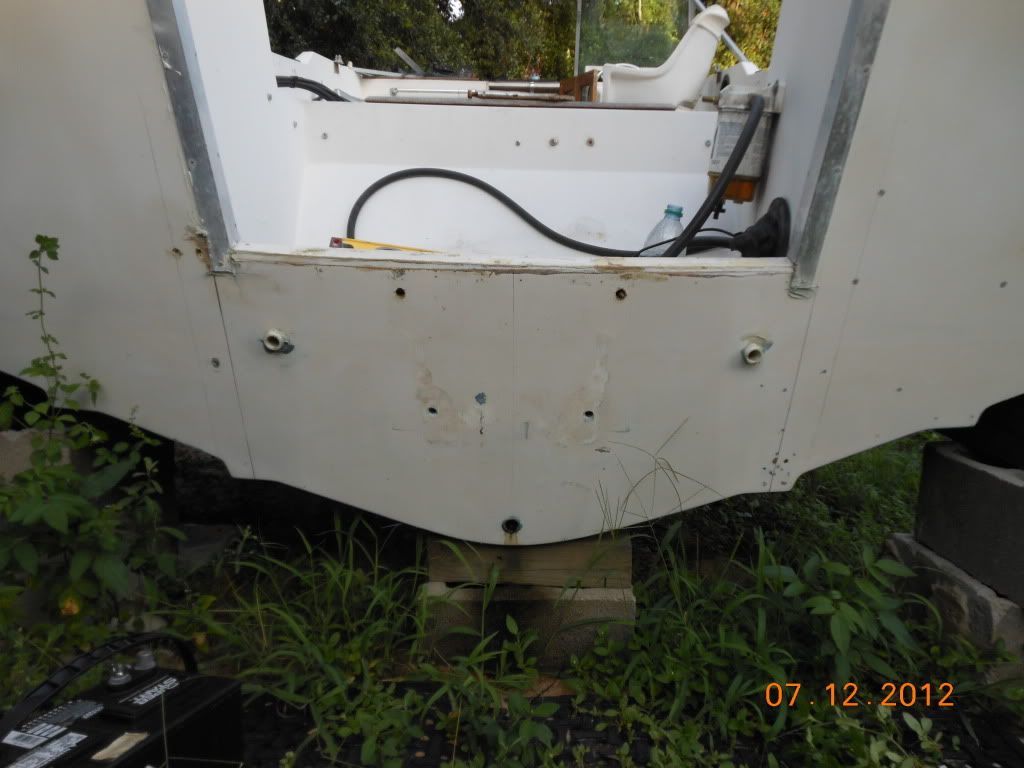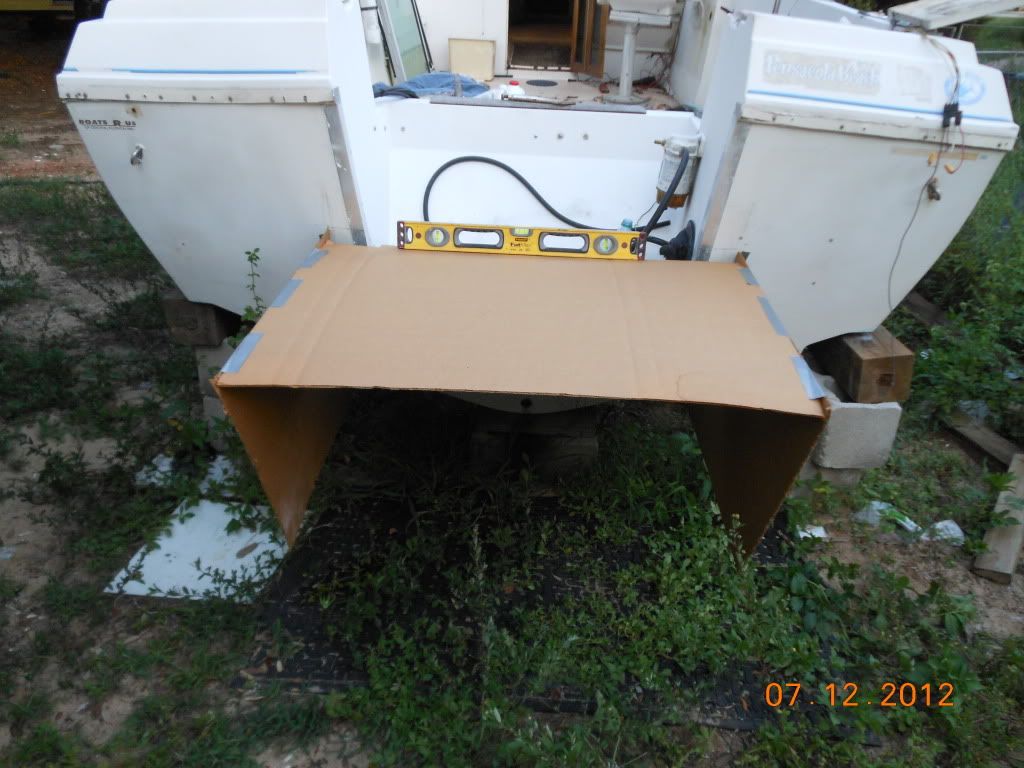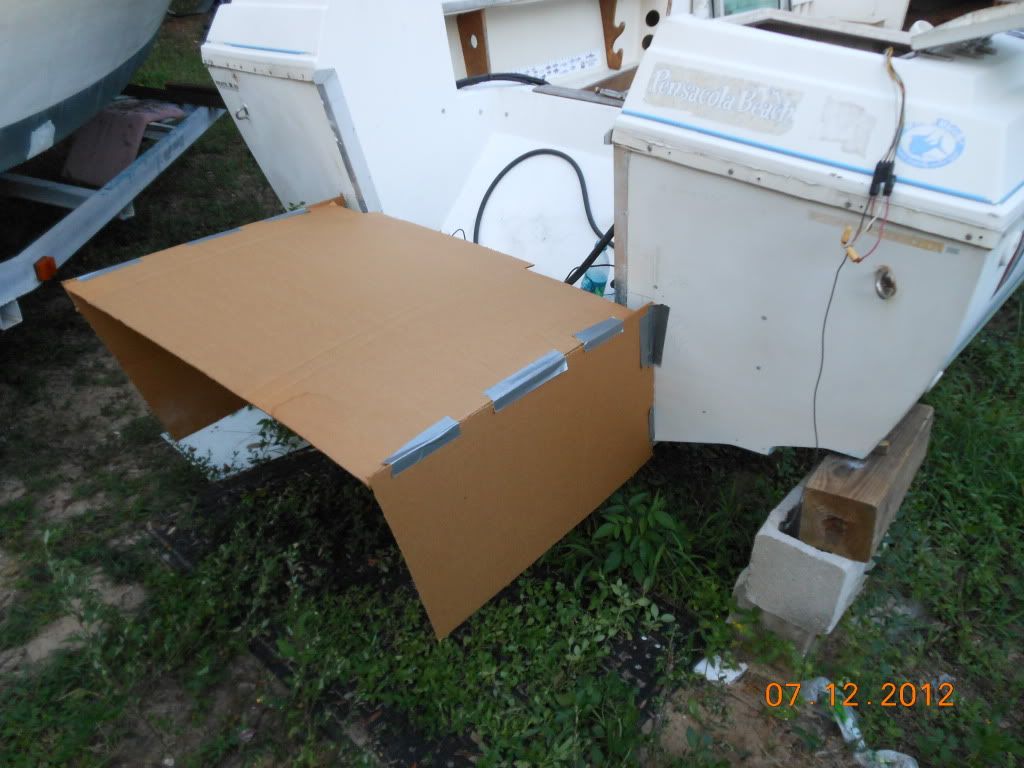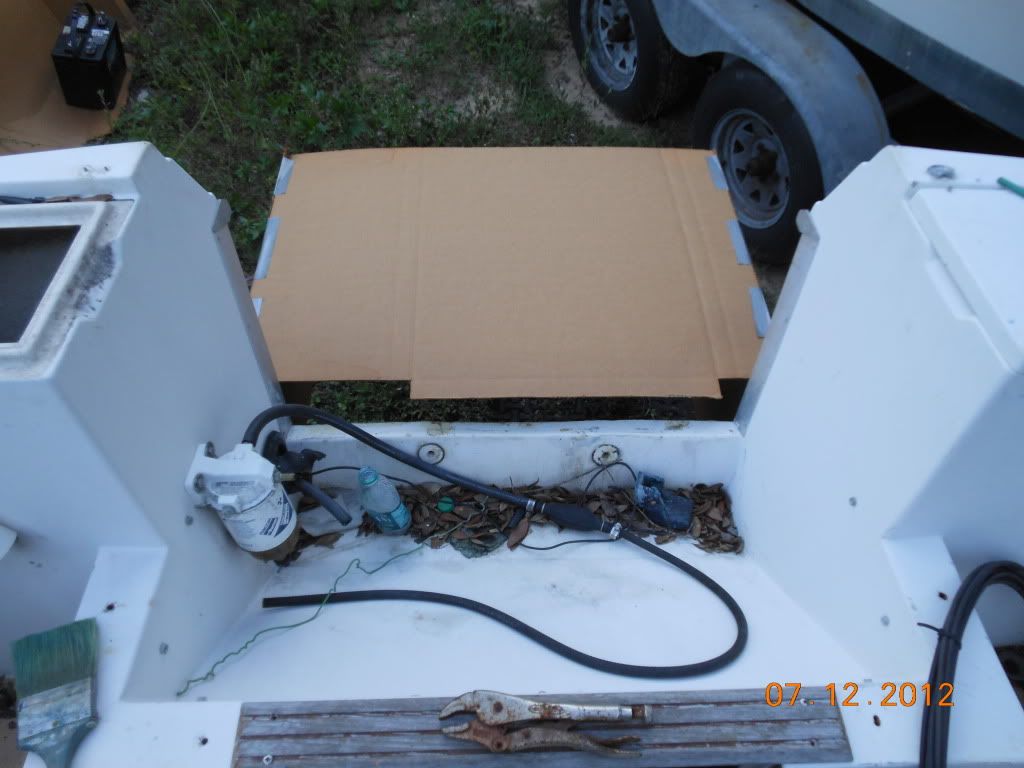jasoncooperpcola
God
I cut some cardboard into the shape of what my bracket should end up. Its rather large. 
Its 41" wide, 17" tall, and has a setback of 30". Totally submerged it will provide about 850lbs of floatation. Assuming my waterline stays the same, about 10" will be submerged. So that is about 550lbs of floatation.
First pic, the sharpie lines are where the outside of the stringers are. My plan is to extend the stringers out the transom and build my floatation box off the extended stringers.

This is the basic bracket shape. I cut it too tall, so i just dropped it below the hull for now. Ran out of light and i will cut it correctly tomorrow. That is a 2' level on the top for reference to size.



What do yall think? The outside edges of the bracket will be flush with the bottom of the hull at the strakes, and the bottom of the bracket will be flat. I will have 5" between the bottom of the boat and the bracket.
I think its the best compromise for the most floatation and also keeping the basic purpose of a bracket. RidgeRunner linked a site, http://www.hermco.net/ thier design has the most floatation, but i believe their design does take away some of the performance aspects of a bracket as they dont "swoop" up any.

Its 41" wide, 17" tall, and has a setback of 30". Totally submerged it will provide about 850lbs of floatation. Assuming my waterline stays the same, about 10" will be submerged. So that is about 550lbs of floatation.
First pic, the sharpie lines are where the outside of the stringers are. My plan is to extend the stringers out the transom and build my floatation box off the extended stringers.

This is the basic bracket shape. I cut it too tall, so i just dropped it below the hull for now. Ran out of light and i will cut it correctly tomorrow. That is a 2' level on the top for reference to size.



What do yall think? The outside edges of the bracket will be flush with the bottom of the hull at the strakes, and the bottom of the bracket will be flat. I will have 5" between the bottom of the boat and the bracket.
I think its the best compromise for the most floatation and also keeping the basic purpose of a bracket. RidgeRunner linked a site, http://www.hermco.net/ thier design has the most floatation, but i believe their design does take away some of the performance aspects of a bracket as they dont "swoop" up any.


 Umm , did I stray?
Umm , did I stray? 25 if you count the motor. 26 if you count the bow pulpit.
25 if you count the motor. 26 if you count the bow pulpit.